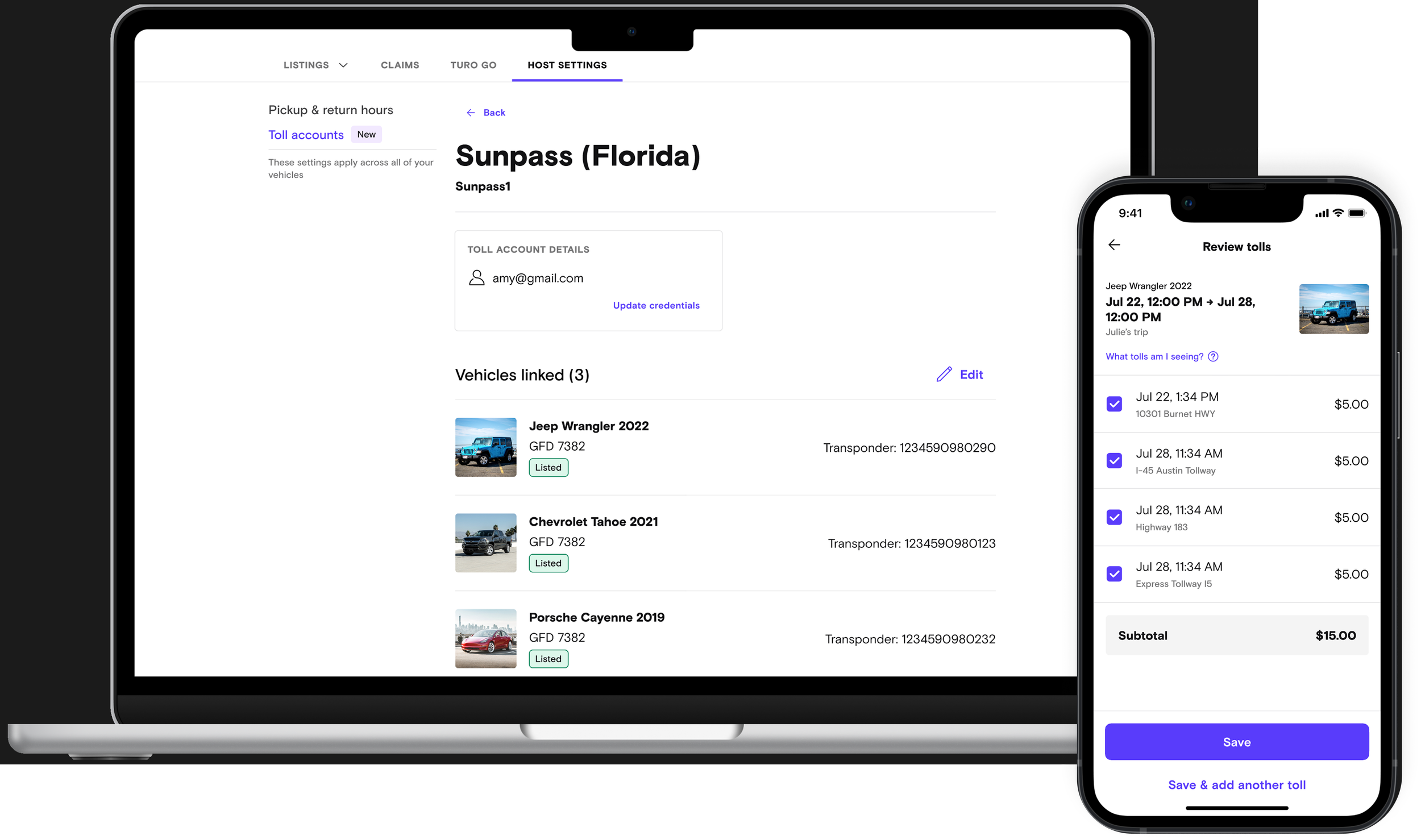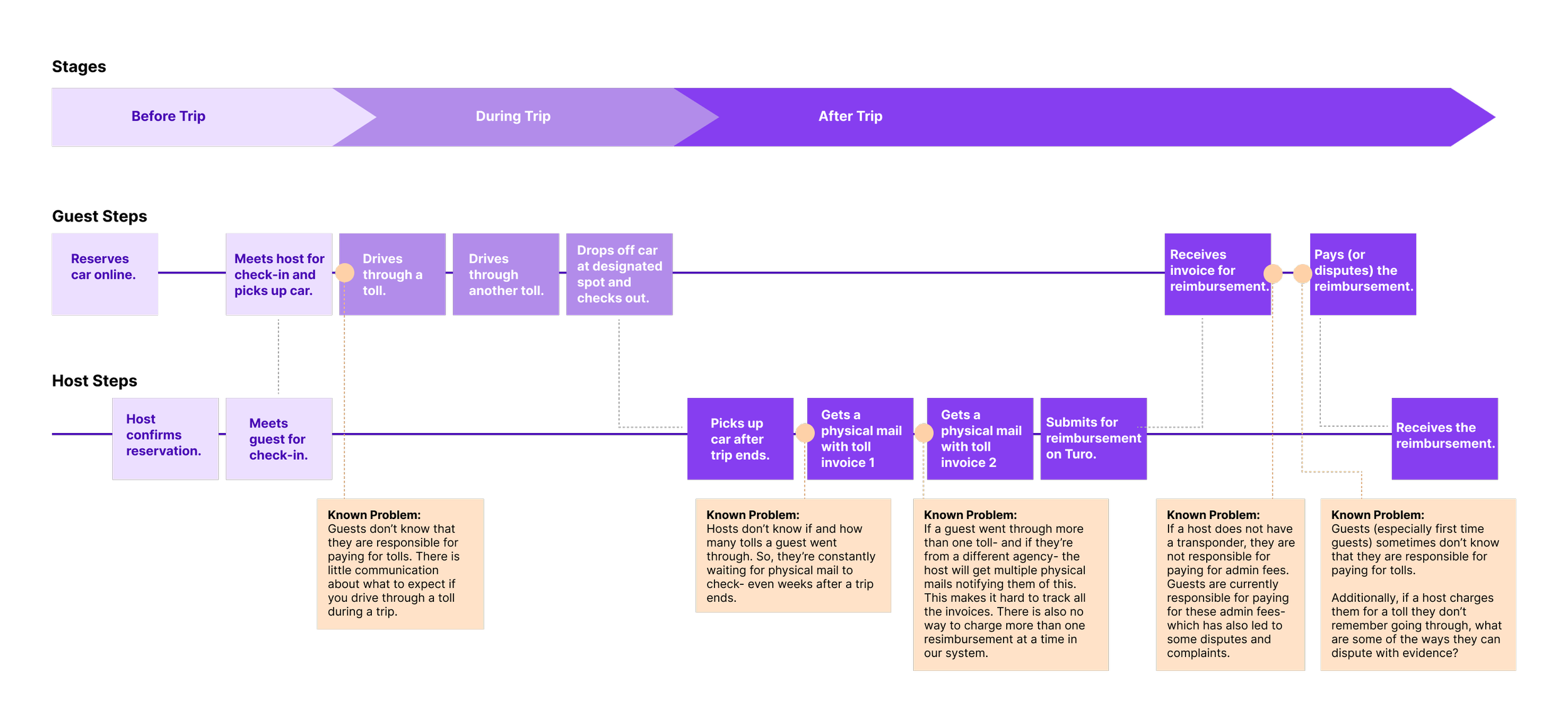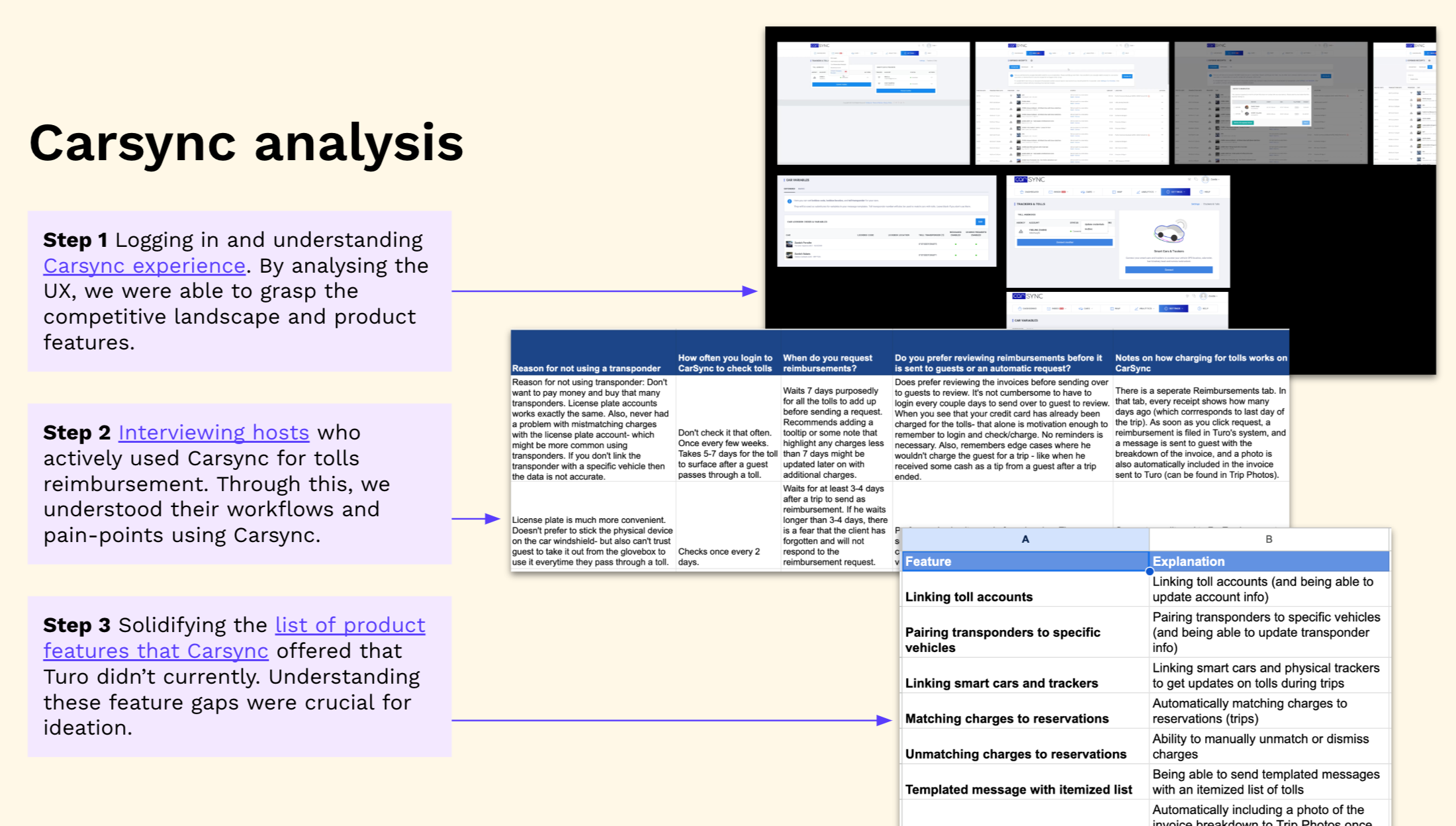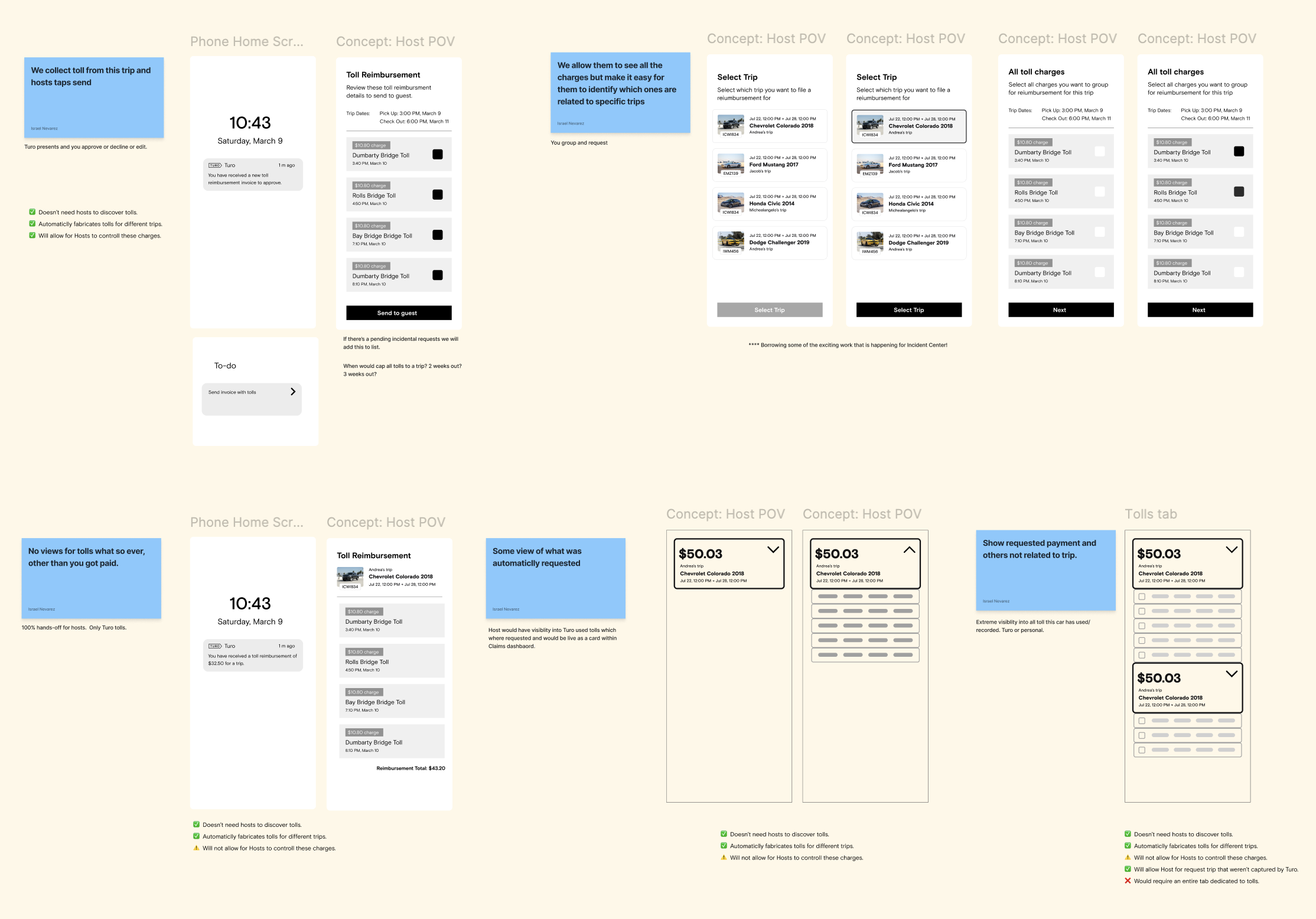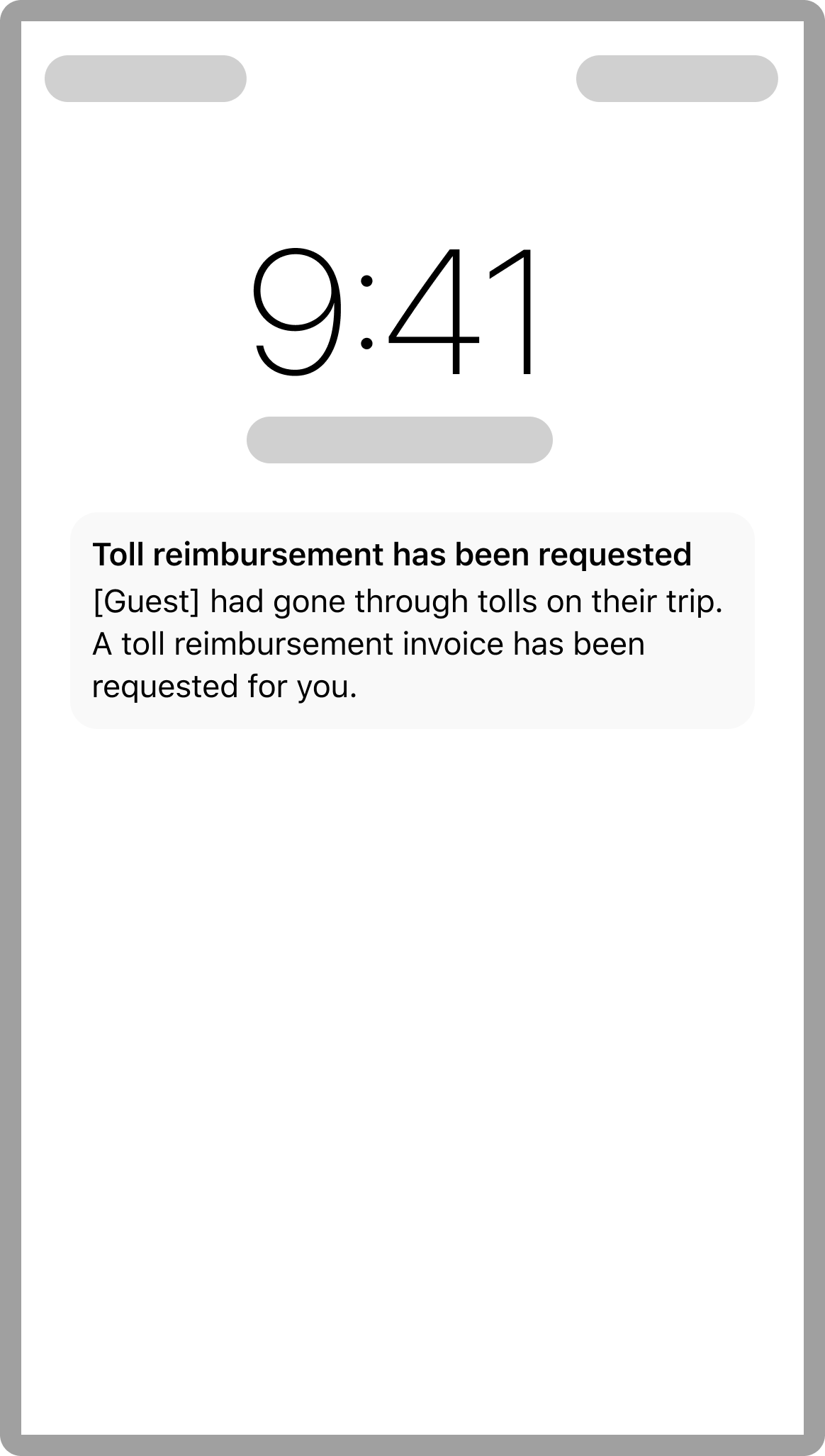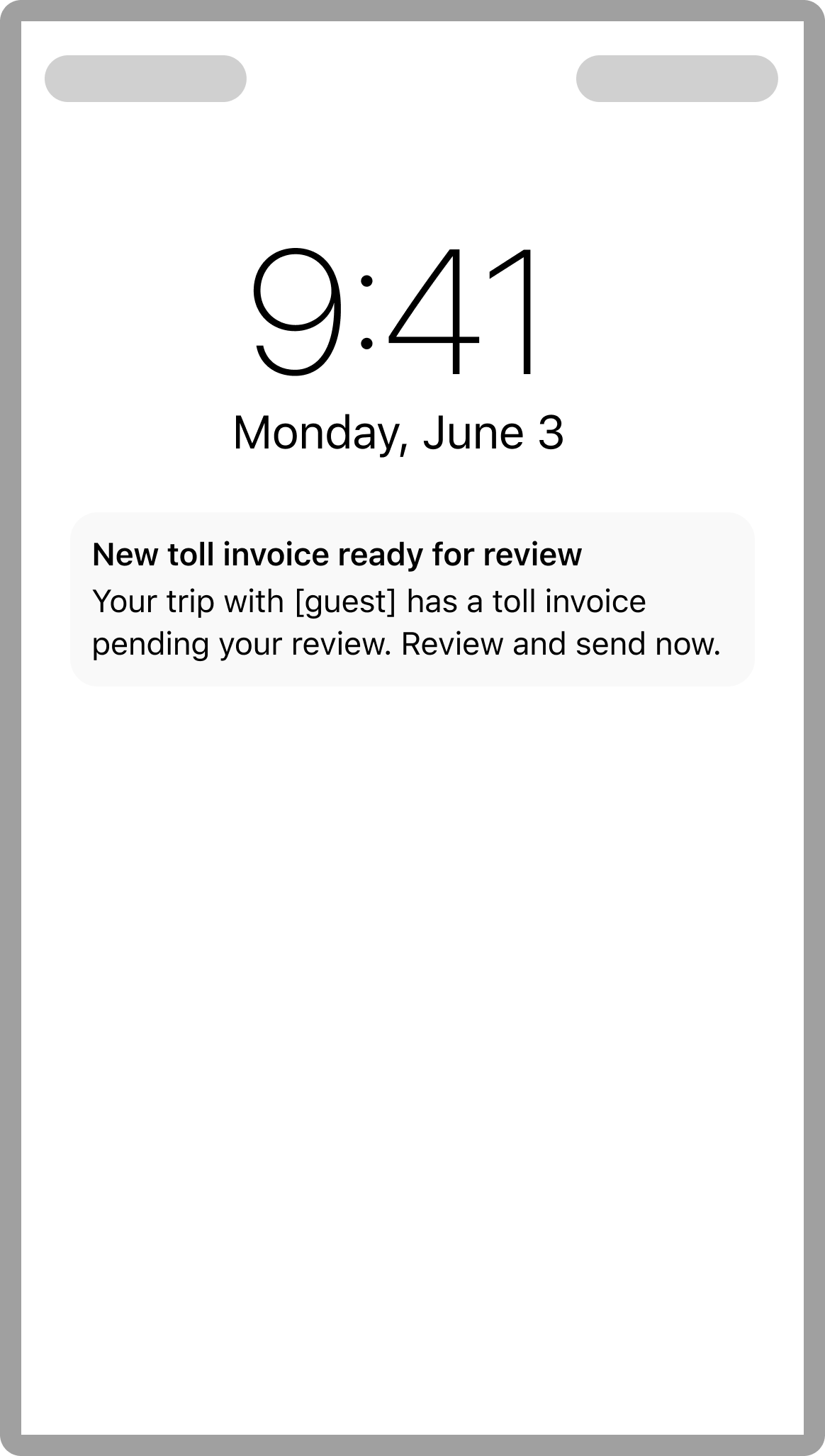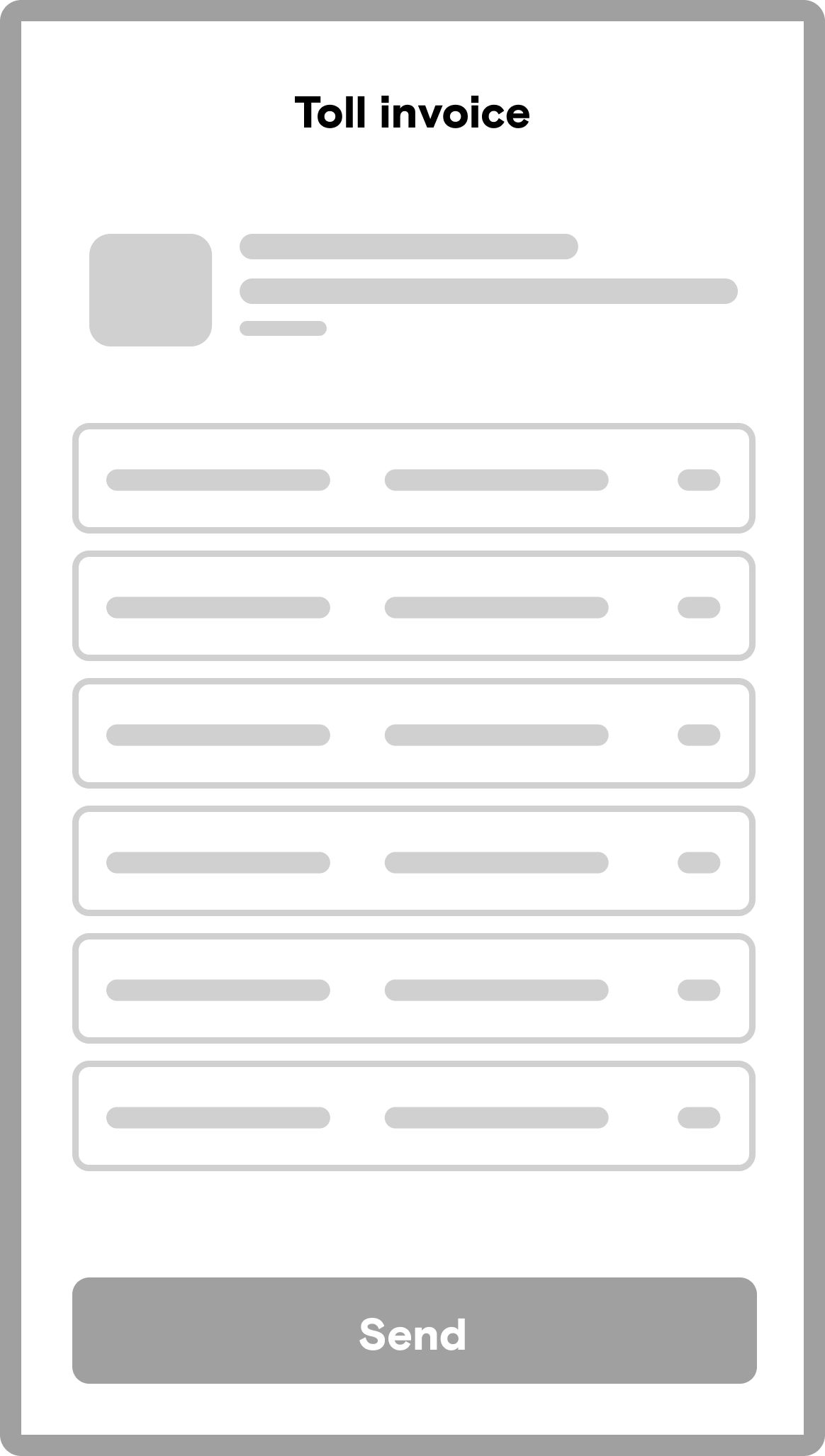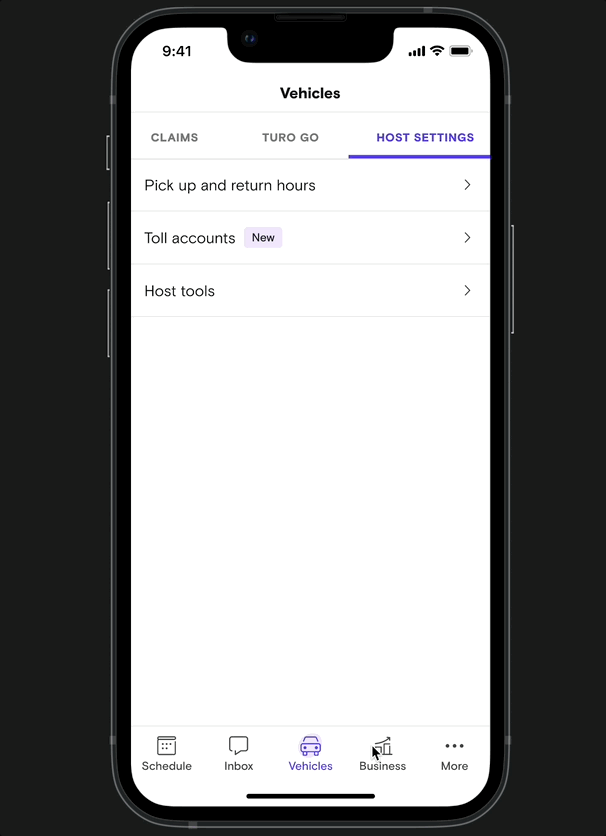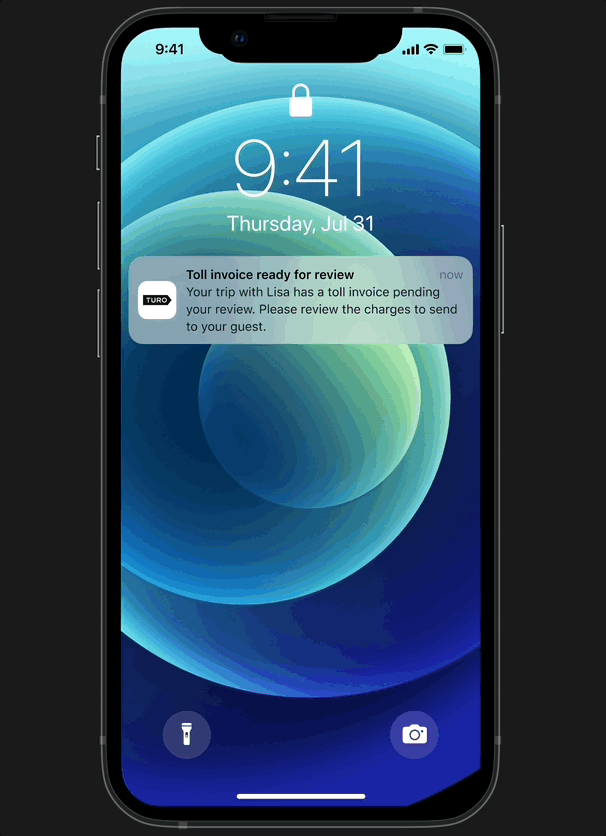Automating Toll Invoices for Hosts
Improving operational efficiency and host satisfaction through billing automation
When toll charges weren’t automated on Turo, hosts had to manually track and request reimbursements from guests — a process that was error-prone and led to high volumes of support contacts. I led the end-to-end design of a new toll automation system that streamlined this process for hosts and significantly reduced operational overhead.
PRMIARY METRIC
10% reduction in reimbursement contacts
RESULT
25% reduction in reimbursement contacts
Context & Goals
For hosts on Turo, toll reimbursements were one of the most frustrating parts of managing their business. Toll invoices would arrive days or weeks after a trip ended, and hosts had to manually match them to the right guests, request reimbursement, and often follow up via support if guests didn’t respond.
Our goal was to streamline the toll process to:
Reduce toll-related support contacts by 10%
Improve host trust in the platform’s operations
Set the foundation for future automation in reimbursements
My Role
I led design from strategy through delivery, partnering with a product designer and a cross-functional team of PMs, engineers, and CX stakeholders.
One of the biggest challenges was a hard four-month deadline. Turo hosts had been relying on a third-party vendor to automate toll reimbursements for a majority of hosts, and the contract was set to expire — with no extension. If we didn’t ship by that date, thousands of hosts would lose a critical operational tool, and support volume was expected to spike and we would risk churn.
To hit the timeline, I:
Framed a clear north star experience early with PMs and engineers
Defined priorities, creating a list of must-haves vs nice-to-haves
Delegated ownership of flows to the junior designer while reviewing key decisions to ensure alignment
Facilitated working sessions across design, ops, and legal to get buy-in fast
Discovery & Problem Framing
We sent out a poll to Carsync users to identify which features they relied on most. Toll automation emerged as one of the top features, valued for saving time and reducing repetitive manual tasks.
Without automation, the toll reimbursement process through Turo was painfully manual. This process wasn’t just tedious — it led to errors, delays, and a surge in guest-host disputes and support tickets.
PROBLEM #1
Manual and tedious chore for hosts to do on Turo sometimes taking 4+ hours/day
PROBLEM #2
High customer support costs for toll reimbursement contacts
PROBLEM #3
Scalability for reimbursements were limited which leads to bad debt
It became clear that this was a host need to function on Turo.
To deliver on this vision within the four-month deadline, we needed to:
Translate Carsync’s automation into a native Turo experience
Minimize friction and manual effort
Build trust through transparency and accurate charge matching
Research & Design Strategy
To guide our design approach, we began by recording and analyzing how hosts interacted with Carsync — their third-party automation tool. We highlighted what specific features hosts needed so that we could determine priorities. We also looked into competitors and had workshops with host teams to determine where this feature would live.
From these interviews and workshops, we highlighted our core design principles.
Minimize manual work — hosts were clear: “I don’t want to spend all my time requesting tolls.”
Build trust with visibility — hosts needed clear proof of charges in case guests pushed back.
Make automation feel effortless — setup needed to be simple and match across edge cases (transponders, license plates, different toll agencies).
HOW MIGHT WE
Help hosts get reimbursed for tolls with less manual effort — while ensuring accuracy and guest transparency?
Ideation
Designing for automation at scale under a hard and tight deadline introduced a series of complex constraints that we had to work through collaboratively with engineering:
Vehicle Linking: Hosts would need to connect different toll agencies with different vehicles and be able to link transponders as well as license plates. We had to keep the onboarding flows lightweight and easy.
Invoice Limitation: Hosts could only request one reimbursement invoice at a time. If a mileage or refueling charge was already pending on a trip, a toll invoice couldn't be created. This meant we had to carefully time when tolls were surfaced and eligible for request, and design UX guardrails to handle these states gracefully.
Trip Matching Logic: We needed to determine whether we could automatically match tolls to trips and send requests, or whether hosts would need to review and confirm. We weighed our options:
Option 1:
Full automation (hands-free, no review)
Option 2:
Semi-automation (system matches, host reviews and approves)
After many discussions with our engineering and product teams, we decided that Option 2 was the best way forward for the pilot. There were too many concerns with the accuracy of full automation which could result in guest and host distrust.
Execution & Final Experience
We designed the final experience to feel light-touch, trustworthy, and fast for hosts. The flow centered around semi-automated toll matching: after a trip ended, Turo would surface any matching tolls, attach visual proof, and prompt the host to review and submit the reimbursement in just a few taps.
Host Onboarding Experience
Seamless account linking: Hosts could securely log into their preferred toll agency to connect their accounts and link their vehicles.
Support for multi-state fleets: We designed the system to handle multiple toll agency accounts, making it easy for hosts with vehicles registered across different states to stay organized.
Automated fleet setup": For fleet hosts, if a toll account only contained license plates (no transponders), we automatically matched each plate to the corresponding vehicle in their Turo fleet—saving them hours of manual setup.
Invoicing
Toll detection & invoice creation: 7 days after a trip ended, hosts were notified if tolls were detected. This ensured we captured the majority of tolls before generating an invoice.
Invoice review & editing: Hosts could easily review the invoice, and add or remove tolls manually. This gave them flexibility to correct errors or include any tolls that weren’t auto-detected.
Streamlined guest communication: To reduce friction, we provided a pre-written message hosts could send to guests.
Built-in evidence for transparency: Each invoice automatically included a visual breakdown of toll line items, giving guests clear evidence and reducing the chance of disputes.
Pilot Testing & Iteration
Before launching publicly, we ran a closed internal pilot with employee-hosts to validate system behavior and test the end-to-end experience. The pilot surfaced confusion around vehicle linking — specifically whether linking a transponder would automatically associate tolls via license plate as well. Based on this feedback, we revised the copy in setup and toll review flows to clarify how tolls would be detected and linked, improving trust in the automation.
Results & Reflection
The toll automation MVP shipped on time ahead of the third-party contract expiration — avoiding service disruption and support escalations for thousands of hosts. Beyond meeting our tight deadline, the results far exceeded expectations:
✅ 25% YOY reduction in toll-related support contacts (vs. 10% target)
✅ Significant improvement in host satisfaction and trust
✅ Positive adoption without the need for onboarding campaigns
This project was a great reminder that constraints can actually be a good thing. Having a hard deadline pushed us to stay focused and make smart decisions quickly. We prioritized what mattered most and still delivered something hosts loved.
It was also a growth moment for me as a lead — I mentored a junior designer, helped shape the overall product direction, and kept us aligned across teams under pressure.
